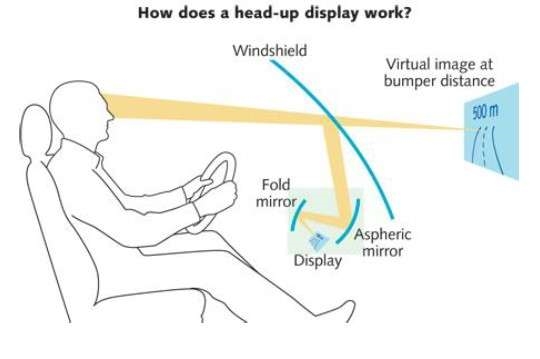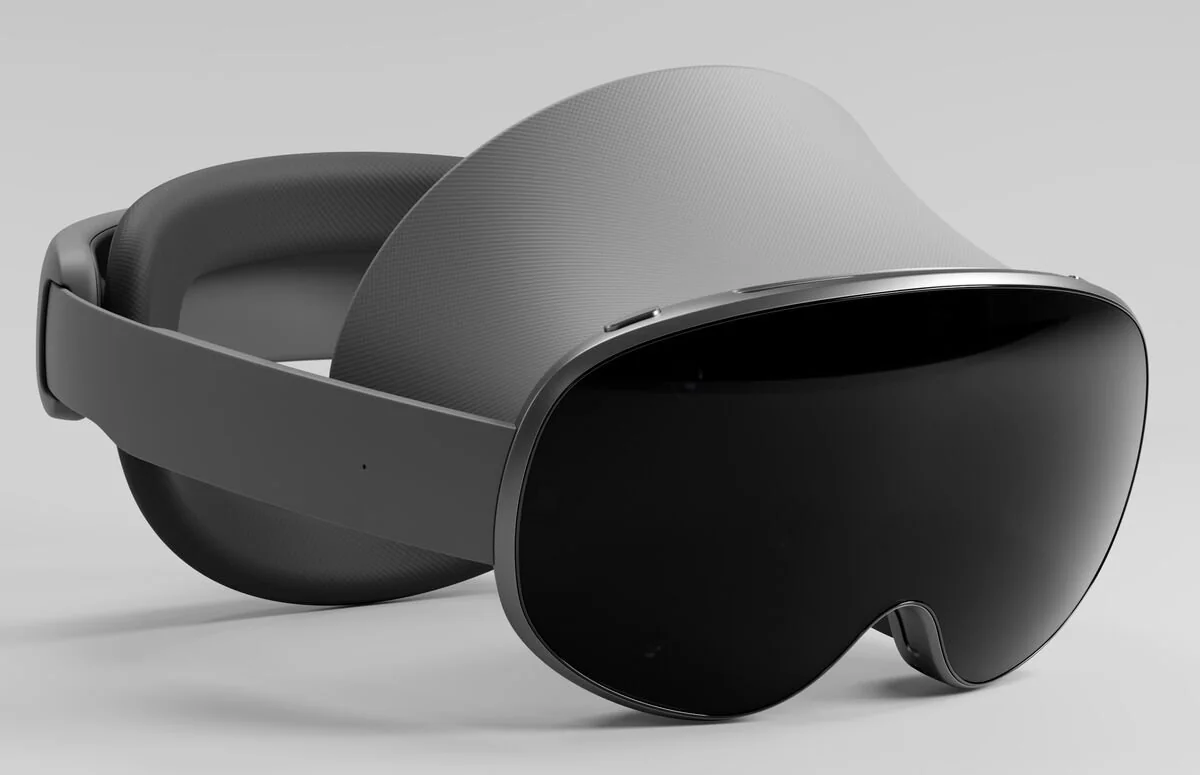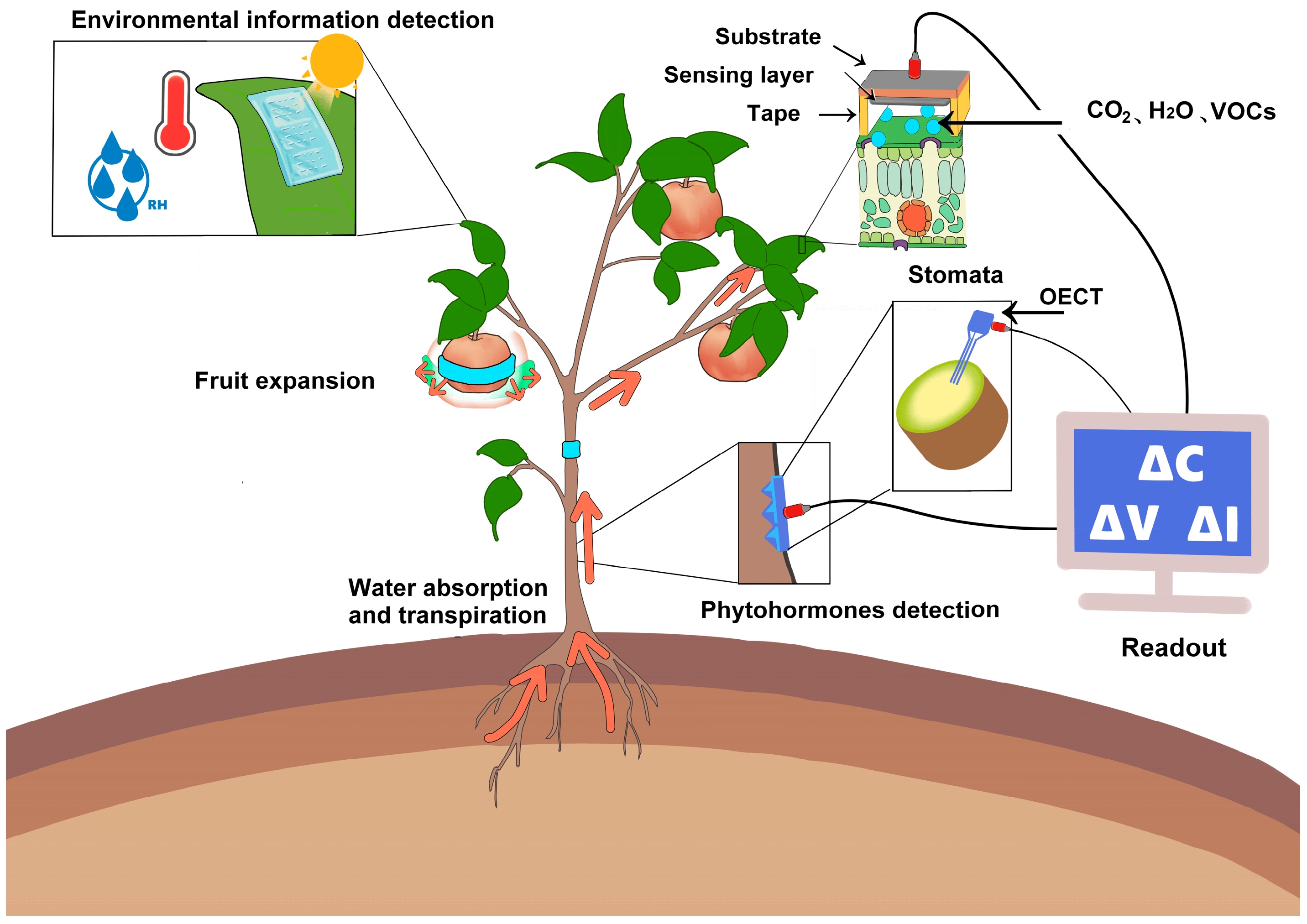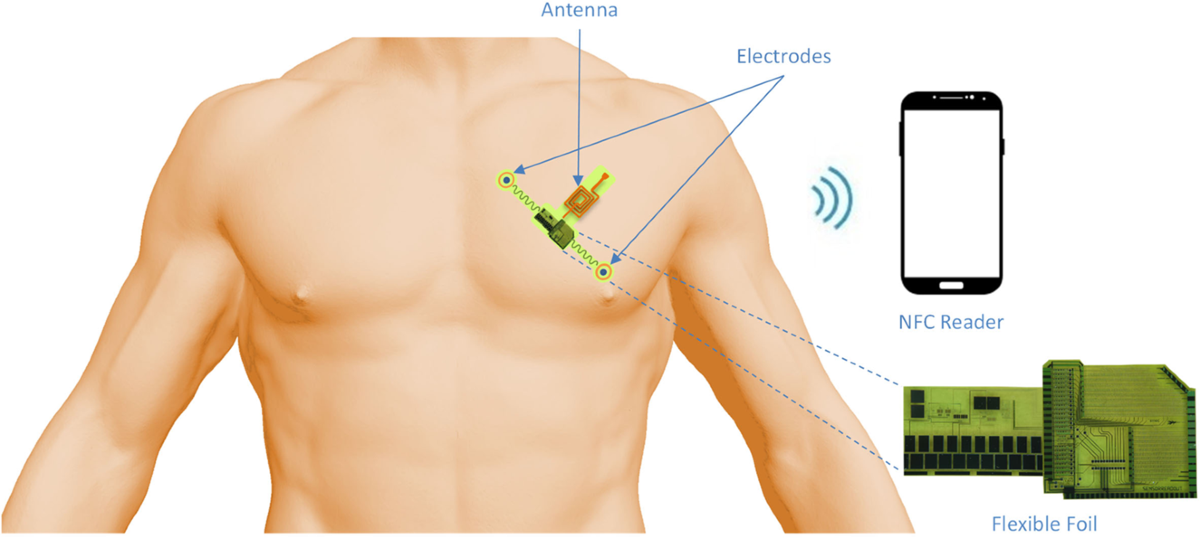Overview
Flexible wearable sensors are a key component of wearable electronic systems. They have broad application potential in personal health monitoring, human-machine interaction, and artificial electronic skin, and are among the most active areas of current research.
According to a report by MEMS consulting, a team led by Jianhua Zhang at Shanghai University recently published a review article in Nature summarizing the research status of different types of flexible wearable sensors. The review also analyzes challenges and new methods for large-area sensor array fabrication, and outlines future development trends for flexible sensors.
Flexible pressure/strain sensors
Recent work has produced various high-sensitivity, fast-response pressure and strain sensors based on novel functional nanomaterials and micro/nanostructures. The Shanghai University team used the excellent conductivity of the 2D material MXene Ti3C2 and the natural wavy microstructure on fabric surfaces to design and fabricate a flexible fabric piezoresistive pressure sensor, shown below. This flexible sensor offers high sensitivity and fast response, meeting the needs of human-machine interfaces, pulse monitoring, voice recognition, and other flexible applications.

Figure 1 Flexible fabric piezoresistive pressure sensor: (a) schematic; (b) working mechanism; (c) voice recognition application
Flexible temperature sensors
Temperature sensors play a critical role in monitoring body temperature and sensing environmental temperature. Most flexible temperature sensors operate by detecting changes in the electrical properties of temperature-sensitive materials. One study proposed a Ti3C2Tx nanoparticle-flake composite network as the temperature-sensitive conductive material, combined with PDMS as a substrate to form a Ti3C2Tx-PDMS flexible temperature sensor. As temperature increases, the PDMS substrate undergoes isotropic thermal expansion, causing larger cracks to form in the conductive network attached to it. These crack size changes produce resistance variations in the device, enabling temperature detection. Extended into a 4 x 4 sensor array, the device can successfully map the thermal distribution of objects such as a finger, a cup, and a UV lamp, demonstrating strong potential for near-field temperature mapping.

Figure 2 Ti3C2Tx/PDMS temperature sensor device: (a) crack size changes in the conductive material at different temperatures; (b) temperature distribution mapping application
Flexible humidity sensors
Like flexible temperature sensors, flexible humidity sensors typically detect changes in electrical conductivity of sensing materials at different humidity levels. 2D transition metal carbides (MXenes) have a hydroxyl-rich nanostructure and good hydrophilicity, attracting interest for humidity sensing. Researchers at Jilin University proposed an alkali-treated MXene (AMX) processed with sodium hydroxide. Due to alkali metal ion intercalation and increased oxygen-fluorine surface terminations, AMX devices exhibit excellent humidity sensitivity, as illustrated below.

Figure 3 AMX-based humidity sensor: (a) schematic of H2O adsorption on the AMX surface; (b) comparison of humidity response for MXene and AMX devices
Flexible optical sensors
Optical sensors are often based on photoelectric principles and are therefore also called photodetectors. They are important for environmental monitoring, image sensing, surveillance, and smartphone applications. The Shanghai University team proposed an organic photodiode (OPD) based on ultrafine nickel oxide (NiOx) nanocrystals. The high lowest unoccupied molecular orbital level of NiOx blocks dark current from external bias, reducing the OPD dark current by more than an order of magnitude, as shown below.
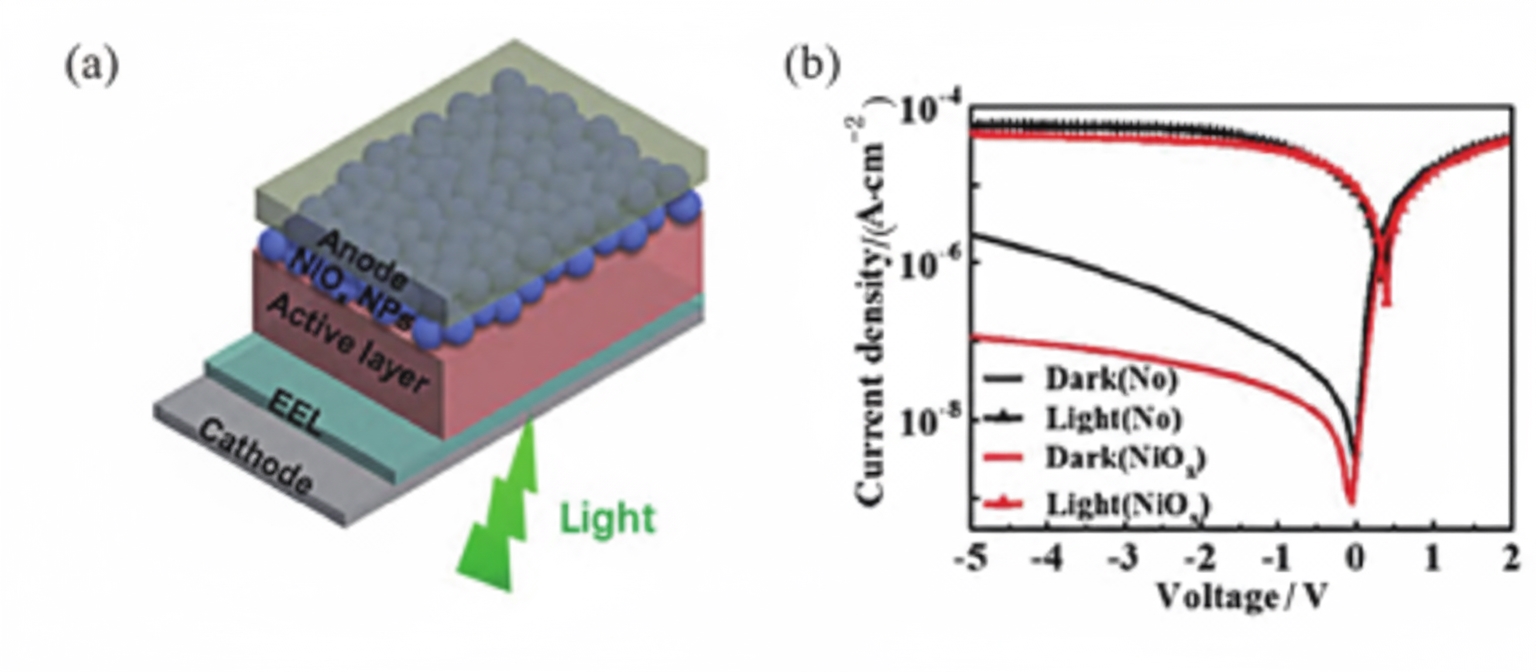
Figure 4 NiOx-based OPD: (a) schematic; (b) current density comparison of devices with and without NiOx under dark and illuminated conditions
Further reading
Wearable Sensor Technology and Market - 2022 edition
Printed and Flexible Sensor Technology and Market - 2021 edition
Flexible sensor arrays based on thin-film transistors
Thin-film transistors (TFTs) have been successfully used as active elements in displays due to their suitability for high-density fabrication, high resolution, low power consumption, and light weight. Leveraging TFT signal amplification and advantages in flexible array fabrication, integrating TFTs with conventional flexible sensing units can improve sensor sensitivity and dimensionality. TFT-based sensing offers great potential for arraying sensors on flexible substrates. One study fabricated a low-power, high-sensitivity flexible active pressure sensor array based on organic TFTs. The 5 x 5 active array has a spatial resolution of 12.83 ppi and can map the planar position of the letter "E", comparable to human tactile perception.

Figure 5 Flexible active pressure sensor array: (a) device schematic; (b) mapping of the letter "E" and device response
Conclusions and challenges
In summary, flexible wearable sensors have wide applications in rehabilitation, human-machine interaction, and electronic skin, but they still face several challenges requiring further research. Key issues include how to realize multi-parameter sensing and improve wearability. Current flexible wearable sensors primarily detect external stimuli, whereas human skin can not only sense external stimuli but also store, analyze, and respond to them. Enabling flexible wearable sensors with skin-like sensing and memory functions to achieve intelligent perception is a major focus and challenge for future research.
 ALLPCB
ALLPCB


